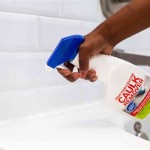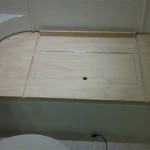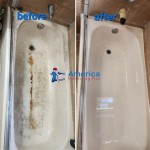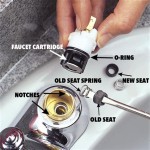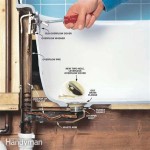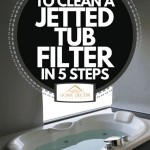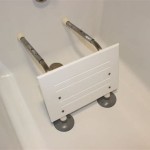Bathtub Hair Catchers and Plugs: A Comprehensive Guide
Bathtub hair catchers and plugs are essential components of modern bathroom hygiene, designed to prevent drain clogs caused by hair, soap scum, and other debris. These seemingly simple devices play a significant role in maintaining plumbing efficiency and preventing costly repairs down the line. Understanding the different types, materials, and functionalities of bathtub hair catchers and plugs allows consumers to make informed decisions when selecting the best option for their needs.
The primary function of a bathtub hair catcher is to trap hair and other solid particles before they enter the drainpipe. Without a hair catcher, hair can accumulate within the drain, mixing with soap residue and grease to form a dense, often impenetrable clog. These clogs restrict water flow, leading to slow draining or complete drain blockage. Clearing such blockages often requires the use of harsh chemical drain cleaners or the services of a professional plumber, both of which can be detrimental to the environment and costly for the homeowner.
Bathtub plugs, conversely, serve the purpose of sealing the drain opening, allowing the tub to fill with water for bathing or other purposes. Plugs come in various designs, each utilizing different mechanisms to create a watertight seal. A malfunctioning plug can result in a leaky tub, wasting water and potentially causing damage to surrounding structures.
Types of Bathtub Hair Catchers
The market offers a wide variety of bathtub hair catchers, each designed with specific features and functionalities. Understanding the different types allows consumers to choose the option that best suits their bathtub drain configuration and personal preferences. These types can be broadly categorized based on their design and installation method.
One common type is the strainer-style hair catcher. These typically consist of a mesh or perforated metal basket that sits inside the drain opening. The basket catches hair and debris as water flows through it. Strainer-style hair catchers are often inexpensive and easy to install, requiring no special tools or modifications to the existing drain. They are also relatively easy to clean; the basket can be removed and the collected debris discarded.
Another type is the silicone hair stopper. These are typically designed as a flat, flexible disc with raised edges and small perforations. The disc sits on top of the drain opening, creating a seal that prevents hair and debris from entering the drain. Silicone hair stoppers are often more aesthetically pleasing than strainer-style catchers and are also easy to clean. However, they may not be as effective at catching very fine hair or small particles.
A third type involves drain covers with built-in hair catchers. These covers replace the existing drain cover and incorporate a mechanism for trapping hair. Some models use a series of small holes or slots to allow water to flow through while trapping hair. Others utilize a removable basket or filter that can be easily cleaned. Drain covers with built-in hair catchers offer a more integrated and aesthetically pleasing solution, but they may require some minor plumbing knowledge to install.
An emerging category is the drain hair snake. Though not strictly a "catcher" in the same way, these flexible tools are inserted into the drain to manually remove hair and debris. While they don't prevent hair from entering, they offer an effective method for regularly cleaning the drain and preventing clogs from forming. These tools are often reusable and can be a cost-effective alternative to chemical drain cleaners.
Finally, there are more specialized hair catchers designed for specific drain types, such as pop-up drains or flip-it drains. These catchers are typically designed to integrate seamlessly with the existing drain mechanism and may require professional installation. They often offer a more discreet and effective solution for preventing hair clogs in these types of drains.
Types of Bathtub Plugs
Bathtub plugs are equally diverse, with various designs catering to different bathtub styles and plumbing configurations. The primary function of a bathtub plug is to create a watertight seal in the drain opening, preventing water from escaping while the tub is being filled.
The simplest type is the stopper plug, which is a solid piece of rubber, plastic, or metal that is inserted directly into the drain opening. Stopper plugs are typically inexpensive and easy to use, but they may not always create a perfect seal, especially if the drain opening is worn or damaged. They are also prone to being lost or misplaced.
Another common type is the pop-up drain plug. These plugs are operated by a lever or knob located on the overflow plate of the bathtub. When the lever is activated, a mechanism within the drain lifts or lowers the plug, opening or closing the drain. Pop-up drain plugs are convenient and easy to use, but they can be prone to malfunction if the linkage becomes corroded or misaligned.
A variation of the pop-up drain plug is the toe-touch drain plug. These plugs are operated by pressing down on the plug with one's toe. Pressing the plug once seals the drain, and pressing it again releases the seal. Toe-touch drain plugs are similar to pop-up drain plugs in terms of convenience, but they may be more susceptible to hair entanglement, which can impede their operation.
Flip-it drain plugs are another type, utilizing a lever that flips to seal or unseal the drain. These are generally easier to clean than pop-up or toe-touch plugs, and can often be installed without tools. However, the seal may not be as tight as other types, making them prone to slow leaks.
Finally, there are more modern and sophisticated bathtub plugs, such as push-button drain plugs and electronic drain plugs. Push-button drain plugs are operated by pressing a button located on the drain cover. Electronic drain plugs utilize sensors and motors to automatically open and close the drain. These types of plugs offer enhanced convenience and functionality, but they are typically more expensive and may require professional installation.
Factors to Consider When Choosing a Hair Catcher and Plug
Selecting the right bathtub hair catcher and plug involves considering several factors to ensure optimal performance and compatibility with the existing plumbing system. These factors include drain size and type, material, ease of cleaning, and aesthetics.
The first and most important factor is the size and type of the bathtub drain. Hair catchers and plugs are designed to fit specific drain sizes and configurations. Using the wrong size or type can result in a loose fit, which will not effectively trap hair or seal the drain. Before purchasing a hair catcher or plug, it is essential to measure the diameter of the drain opening and identify the type of drain (e.g., standard drain, pop-up drain, flip-it drain). This information will help narrow down the selection and ensure compatibility.
The material of the hair catcher and plug is another important consideration. Common materials include stainless steel, silicone, plastic, and rubber. Stainless steel is durable and corrosion-resistant, making it a good choice for long-term use. Silicone is flexible and non-slip, providing a good seal. Plastic is inexpensive and lightweight, but it may not be as durable as other materials. Rubber is known for its elasticity and ability to create a tight seal, but it can deteriorate over time.
Ease of cleaning is a crucial factor to consider, especially for hair catchers. A hair catcher that is difficult to clean will quickly become clogged and ineffective. Look for hair catchers with a simple design that allows for easy removal of trapped hair and debris. Silicone hair stoppers are often easier to clean than strainer-style catchers, as hair tends to cling less to the smooth surface. For plugs, consider whether the design allows for easy removal of hair and debris that might get caught in the mechanism.
Aesthetics are also a factor to consider, particularly for those who value the overall appearance of their bathroom. Hair catchers and plugs come in a variety of styles and finishes, allowing consumers to choose options that complement their existing fixtures and decor. Some hair catchers are designed to be discreet and blend in with the drain, while others are more decorative and can add a touch of style to the bathroom. Similarly, plugs are available in various finishes, such as chrome, brushed nickel, and brass, allowing consumers to coordinate them with their faucets and other bathroom accessories.
Finally, the overall cost and value of the hair catcher and plug should be considered. While inexpensive options may be tempting, they may not be as durable or effective as more expensive models. Investing in a high-quality hair catcher and plug can save money in the long run by preventing costly drain clogs and repairs. Read reviews and compare prices from different retailers to find the best value for the money.

Tubshroom 1 5 In 75 Bathtub Drain Protector Hair Catcher Tpr With Abs White Chrome And Stopper Plug Bundle Hdtsstp315 The Home Depot

Danco 2 In 1 Bathtub Hair Catcher And Stopper 10772 At Com

Bathtub Stopper Bath Tub Drain Plug Pop Up Hair Catcher 2 In 1 Bathroom Shower For Size 6 To 0

Reviews For Tubshroom 1 5 In 75 Bathtub Drain Protector Hair Catcher Tpr With Abs White Chrome And Stopper Plug Bundle Pg The Home Depot

Bathroom Hair Catcher Shower Bath Plug Hole Waste Stopper Drain Sink Filter Trap

Godom 4 Pack Hair Catcher For Shower Drain 5 7 Inch Flat Rubber Bathroom Tub Cover Bathtub Sink Strainer Plug Protector Stopper

Drain Buddy Tub Ultra Flo 2 In 1 Stopper And Hair Catcher
Bathroom Drain Hair Catcher Bath Stopper Plug Sink Strainer Filter Shower Covers

Drain Protector Hair Catcher Stainless Steel Stopper Plug Included True Value Hardware

Pf Waterworks Fits 3 8 In And 5 16 Tubstrain Universal Toe Touch Hair Catcher Bathtub Drain Stopper Brushed Nickel Pf0936 Bn

